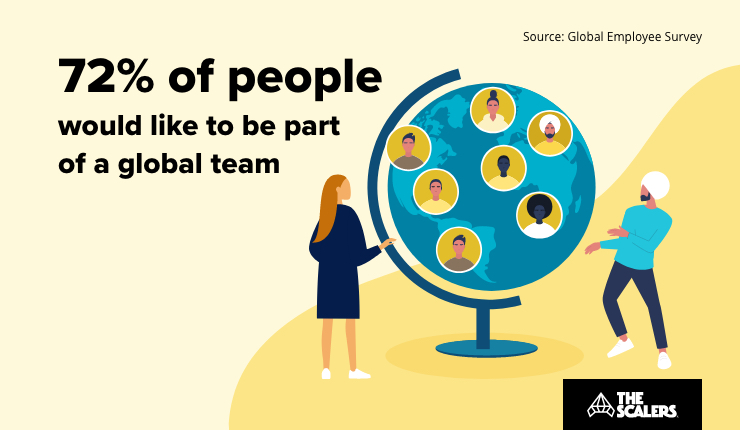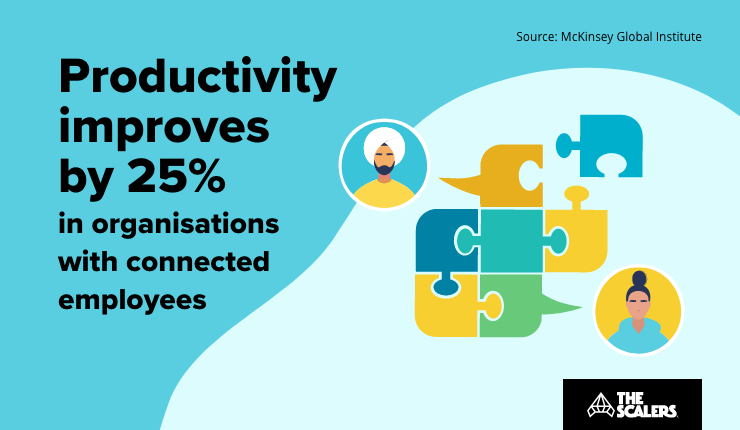More and more companies are relying on a geographically dispersed workforce to build innovative solutions and scale at speed. While there are many benefits of working with global teams, the most significant advantage is the unlimited access to large pools of people with strong functional expertise and deep technical knowledge.
However, on the flip side, building and managing a global team can seem challenging, especially if you’ve never done it before. Collaborating with team members from different ethnic and cultural backgrounds, establishing clear lines of communication, and mitigating social distance are some of the areas that need extra care and attention.
So what can you do?
As experts in building distributed teams for our partners, we understand that there are four key components that must be addressed when working with global teams. Let’s dive deeper…
1. Structure
In layman’s terms, an organisational structure is the pattern of relationships that exist within a business. When hiring locally, building a fundamental structure is fairly straightforward — a team is put together, and a manager is appointed to lead the team members.
But how do you replicate this with global teams?
Simply put, in the exact same way as you would with your local team.
An organisational structure exists to clarify the responsibilities of each employee, remove the confusion and obstacles attached to tasks, and make decision making and communication simpler. At the end of the day, it helps businesses achieve their objectives efficiently. And that’s why, when you’re integrating your local workforce with offshore employees, creating the right structure — one that does not involve power dynamics — is crucial.
Remind your team members, irrespective of where they are located, of three important things:
- The organisation is one single entity, even though every individual may be different in their own way.
- All team members share a common goal and purpose. And that’s why every person’s work contributes to the overall growth of the business.
- The responsibility of team leaders, despite geographical limitations, is to be there for every employee. A brief phone call, an email, or a video chat — the medium doesn’t matter.

2. Technology
Today, technology makes the world go round. And while one can debate about the pros and cons of technological advancements for months on end, the fact of the matter is that technology has made global communication so much simpler.
But are companies communicating the right way?
A recent study conducted by Forrester of over 10,000 employees showed that 94% of them use emails to communicate with their teammates. While there is nothing really wrong with emails, they still fall under the delayed communication format, which means that the turnaround time is longer.
Instead, using instant-messaging tools and videoconferencing applications promotes more real-time collaboration, in turn increasing overall efficiency. Unfortunately, not many companies do so. In fact, only 33% of the respondents in the survey use video conferencing tools to communicate with their teams.
What needs to change?
Technologies can either reduce or increase social distance — the key is to choose the right tools and applications that work best for your team.
For instance, video conferencing tools like Skype and Zoom allow rich communication, allowing both context and emotion to be perceived easily. But at the same time, when teams span multiple time zones, it isn’t always convenient to get on a phone call. In such scenarios, e-mails, though they may sometimes lack contextual cues, are the best solution.
Make it work for you and your team. That’s what’s important.
3. Connection
Empathy and connection reduce social distance greatly, even in distributed teams. If teammates can set five minutes on a Zoom call to discuss simple topics like the weather, or that cool new restaurant they visited over the weekend, they are more likely to develop a connection that will help them interact productively in more formal contexts.

Unstructured communication is also great because it allows employees to organically get to know each other, share knowledge, and build relationships. Even when people are located on the other side of the world, this is a compelling way to promote trust.
And as an employer or team leader, it is your responsibility to create opportunities for people to build meaningful friendships, in turn, paving the way for sound company culture.
4. Culture
People define themselves in a multitude of different ways — gender, ethnicity, nationality, political beliefs, religion, and the list goes on and on. And that’s where culture comes in.
Deciphering someone’s culture and identity isn’t always easy. But when working with global teams, it is an extremely crucial step to avoid future conflicts.
Let’s consider a simple example. Indians, while commonly known for their persistence and hard work, are also equally well known for refusing to say ‘no’ to tasks at work, even if they’re not confident or comfortable doing it. While this isn’t a negative trait, it’s definitely different because, in the West, one may say, “Sorry, but I can’t do that — I’ve already got too much on my plate.”
So what can you do?
Simply put, ask questions. For instance, in the previous example, you might ask your Indian teammate if they have all the resources they need to carry out the task or require additional help. Though this may seem like a simple move, it will provide greater insight into how the person truly feels about accomplishing the task.
By taking time to communicate with your global team effectively, you can understand where each employee is coming from, bridge the culture gap, and establish a collaboration built on transparency and honesty.
If you’re interested in building a dedicated development team in Bangalore, India, feel free to reach out to us by filling out the contact form. One of our senior executives will get back to you within 24 hours.
Build Your Team,
Not Just a Contract
With The Scalers’ offshore dedicated development team, you get engineers who join your workflow for the long run. Grow steadily, stay flexible, and work with people who care about the product as much as you do.








